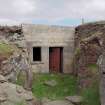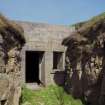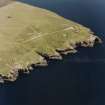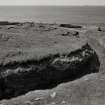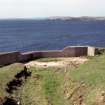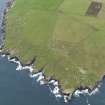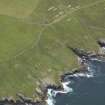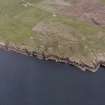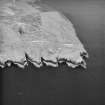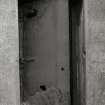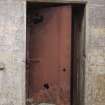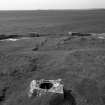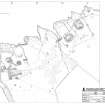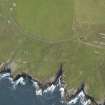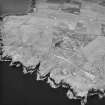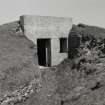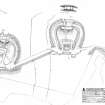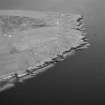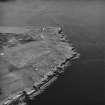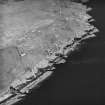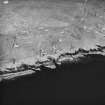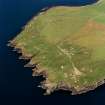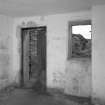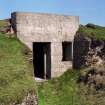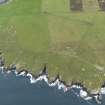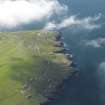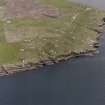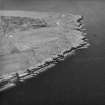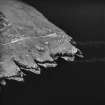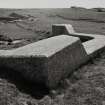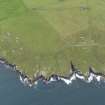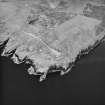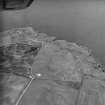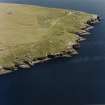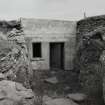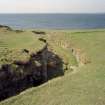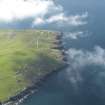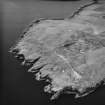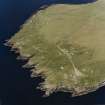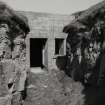South Ronaldsay, Hoxa Head, Hoxa Battery
Coastal Battery (First World War), Gun Emplacement(S) (First World War), Magazine(S) (First World War)
Site Name South Ronaldsay, Hoxa Head, Hoxa Battery
Classification Coastal Battery (First World War), Gun Emplacement(S) (First World War), Magazine(S) (First World War)
Alternative Name(s) World War I; Scapa Flow; Pentland Firth
Canmore ID 133660
Site Number ND49SW 27.01
NGR ND 4034 9281
NGR Description ND 4034 9281 and ND 4030 9287
Datum OSGB36 - NGR
Permalink http://canmore.org.uk/site/133660
- Council Orkney Islands
- Parish South Ronaldsay
- Former Region Orkney Islands Area
- Former District Orkney
- Former County Orkney
ND49SW 27.01 4034 9281 and 4030 9287
The WWI battery at Hoxa Head is situated some 30m inland from the cliff-edge and 300m NW of the later WWII battery (ND49SW 27.00). Two concrete emplacements with holdfasts were for 4-inch guns in open mounts. To the rear are rock-cut horseshoe shaped trenches leading to the semi-underground magazine. Within one magazine some WWII graffitti survives scratched on to the walls. (J Guy 1993; NMRS MS 810/2, 103-106)
Visited by RCAHMS (DE) May 1997
A World War I coast battery situated at Hoxa Head about 230m N of the World War I and II gun batteries.
Consisting of a pair of double open concrete gun-emplacements (ND 40383 92867 and ND 40290 92853, ND 40332 92822 and ND 40340 92808). Each pairof gun-emplacements are linked to a sunken and earth covered concrete magazine by arcs of rock-cut trenches.
The gun-emplacements consist of an arc of low concrete wall or parapet with a block at one end for the ready-use ammunition locker. The edges of parapets have been given a slight chamfer.
The magazines, about 28m to the ENE (ND 40312 92873 and ND 40359 92830) are constucted of shuttered concrete with a door and window at each end. A rusted steel door survives in situ in one of the magazines.
The interior of the magazines have been painted white and on the walls of one some graffitti has been
written, mainly names of serving soldiers from the nearby World war II Coast Battery (ND49SW 27.03 and ND49SW 27.04 ) with others from later dates added.
The four emplacements were armed with 4-inch guns.
Visited by RCAHMS (DE, GS, SW), May 1996
Publication Account (1996)
Hoxa Head overlooks the main entrance into Scapa Flow through Hoxa Sound. Hoxa Battery was built in the First World War at the southern tip of the peninsula and equipped with 6-inch gun emplacements and magazines. In the Second World War it was rebuilt with two 6-inch gun emplacements and magazines, an observation post, an engine-room and footings for searchlights. These defences were strengthened in 1940-1 by the addition of another battery to the north, alongside the lighthouse built in 1901. This is the Balfour Battery, which is now the better preserved of the two. There are two twin 6-pounder gun emplacements with their ammunition magazines and shelters, an observation tower, three searchlight emplacements and an engine-room.
Information from ‘Exploring Scotland’s Heritage: Orkney’, (1996).
Project (March 2013 - September 2013)
A project to characterise the quantity and quality of the Scottish resource of known surviving remains of the First World War. Carried out in partnership between Historic Scotland and RCAHMS.





















































